Greetings, Spidey and symbiote fans! “Venom: The Last Dance” has hit the screens, and if you’re like us, you’re diving deep into the comic book lore to see what you might have missed. This film is packed with nods to the wider Spider-Man universe and some seriously deep comic book cuts. Did you catch them all? We’re breaking down the key Easter eggs and references, so buckle up for a spoiler-filled symbiote deep dive!
Toxin and the Mystery of Patrick Mulligan’s Symbiote
 Patrick Mulligan's Symbiote Transformation in Venom: The Last Dance
Patrick Mulligan's Symbiote Transformation in Venom: The Last Dance
Remember Patrick Mulligan from “Venom: Let There Be Carnage”? The post-credits scene hinted at a symbiote bond after his apparent demise. Many, including us, speculated it was Toxin, the powerful third-generation symbiote in the comics. However, “The Last Dance” throws a curveball. The film reveals that the symbiote that briefly bonded with Mulligan in the previous movie was fleeting and unnamed. Mulligan is then captured by the shadowy Imperium organization and bonded to a different, green, snake-like symbiote.
Initially, Lasher seemed like a possibility. However, the movie quickly dismisses this theory. The filmmakers leave the identity of this symbiote ambiguous, and tragically, Mulligan and this unnamed entity are swiftly eliminated. It’s a disappointing end for Mulligan, who in the comics debuted in Venom/Carnage #1, setting the stage for Toxin’s arrival in issue #2. Whether this was intended as a twisted, unfulfilled Toxin tease remains a question mark, but it’s a significant departure from Mulligan’s comic book trajectory.
Xenophages: Symbiote-Devouring Predators
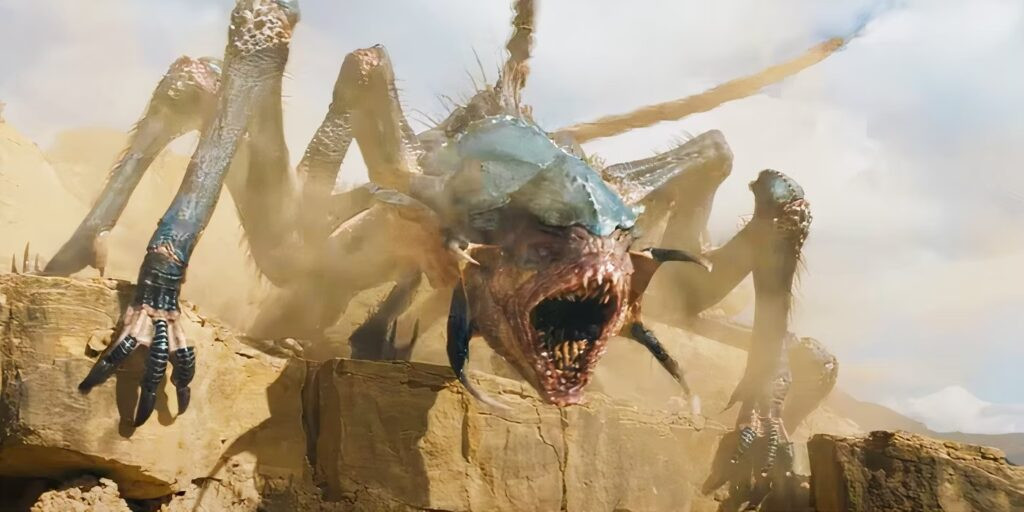 Xenophages hunting symbiotes in Venom: The Last Dance
Xenophages hunting symbiotes in Venom: The Last Dance
Enter the Xenophages, a terrifying alien race from the comics whose sole purpose is to consume symbiotes. In “Venom: The Last Dance”, they aren’t just independent predators; they are under the control of a greater power, hunting Venom specifically for his codex. This codex, formed when Venom revived Eddie in the first film, is revealed to be a crucial key for their master.
The Xenophages are visually gruesome, acting like living woodchippers, swallowing symbiotes whole and expelling the remains. Several symbiotes and their hosts fall victim to this horrific fate, including Mulligan and his Imperium-assigned symbiote. These symbiote hunters made their first comic appearance in Venom: The Hunted #1, establishing their deadly presence in the Venom lore.
Knull: The God of Symbiotes Emerges
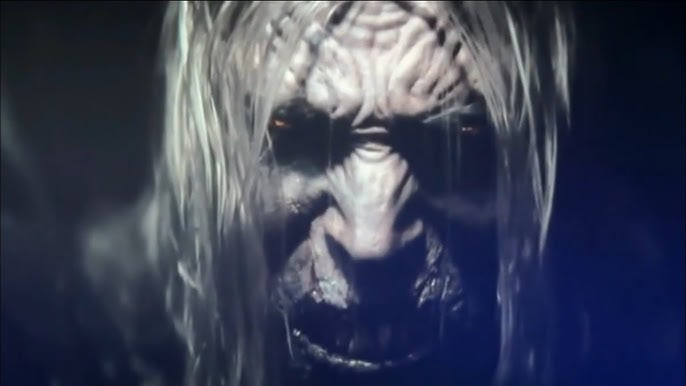 Knull, the symbiote god, in Venom: The Last Dance
Knull, the symbiote god, in Venom: The Last Dance
The mastermind pulling the Xenophage strings is none other than Knull, the God of the Symbiotes. Imprisoned by his own symbiote creations in a unique prison, Knull requires Venom’s codex to break free and unleash his cosmic darkness. Sony has openly acknowledged long-term plans for Knull in their cinematic universe, signaling his importance as a major antagonist.
Adding to the excitement, Andy Serkis, director of “Venom: Let There Be Carnage,” portrays this cosmic horror. Knull’s full comic book debut was in Venom Vol. 4, #3, marking the formal introduction of this universe-altering entity. His inclusion here hints at a potentially grander scale for future Venom and Spider-Man related films.
Sadie and Lasher: A Tentacled Symbiote Connection
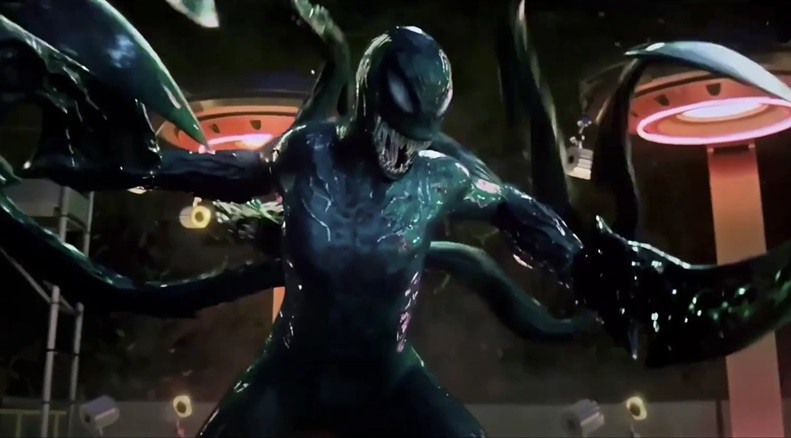 Sadie Christmas bonded with the Lasher symbiote in Venom 3
Sadie Christmas bonded with the Lasher symbiote in Venom 3
Sadie Christmas, an Imperium scientist, becomes host to the green, tentacled Lasher symbiote. Unfortunately, like many symbiotes in this film, Lasher doesn’t survive. The name Sadie does resonate with comic fans, as a young girl named Sadie Sinclair briefly hosted Lasher in Absolute Carnage: Separation Anxiety #1. However, the Lasher symbiote itself predates this, first appearing in the original Venom: Lethal Protector mini-series #4, as one of the five Life Foundation symbiotes.
Teddy Payne: Gender-Swapped Paine in the Imperium
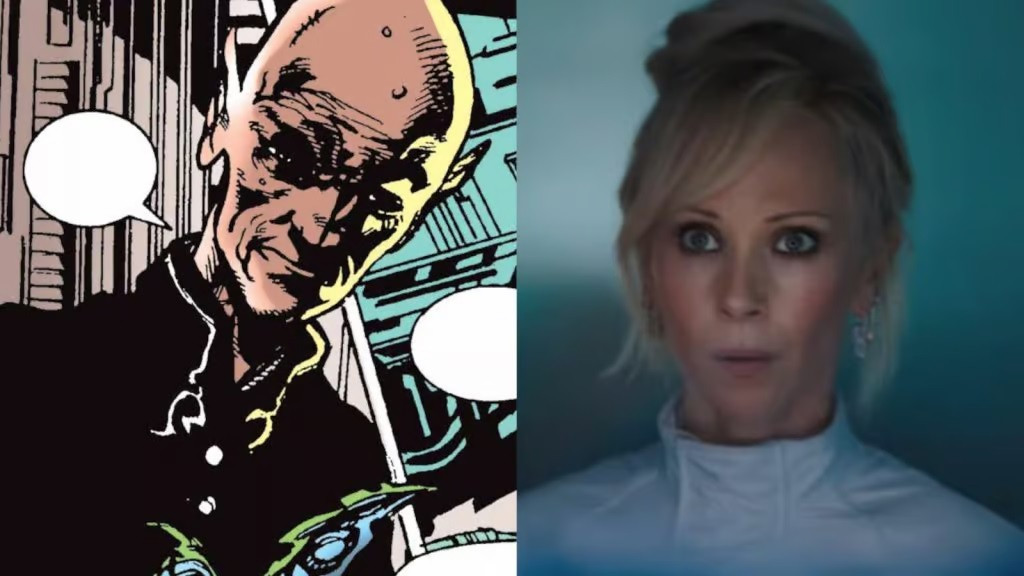 Teddy Payne, the gender-bent version of Dr. Thaddeus Paine, in Venom: The Last Dance
Teddy Payne, the gender-bent version of Dr. Thaddeus Paine, in Venom: The Last Dance
Juno Temple portrays Teddy Payne, a gender-bent version of Dr. Thaddeus Paine (note the slightly different spelling). Like Sadie, Teddy is an Imperium scientist. In the comics, Dr. Paine was initially a foe of Morbius, debuting in Morbius: The Living Vampire #4, before becoming a Venom adversary in the Venom: The Hunger mini-series. This gender swap and shift in allegiance adds a fresh layer to the character while retaining the comic book roots.
Agony: Electric Powers and Symbiote Survival
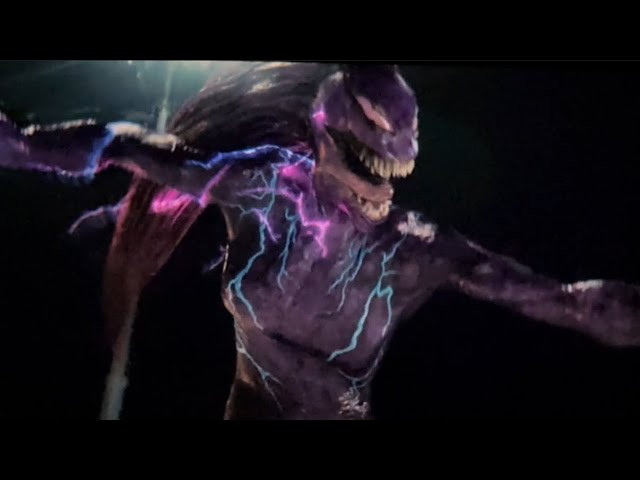 Agony symbiote bonded to Dr. Payne in Venom: The Last Dance
Agony symbiote bonded to Dr. Payne in Venom: The Last Dance
Dr. Payne bonds with the purple Agony symbiote, gaining electrical powers, explained by a childhood lightning strike (a classic comic book trope!). Agony is one of the few symbiotes to survive the film’s events, raising questions about future plans. Will Agony have a larger role, or will she be underutilized like the ambiguous Toxin tease? Agony’s comic book origin is also in Venom: Lethal Protector #4, as another of the Life Foundation Five.
Rex Strickland: Soldier, Not Symbiote Soldier
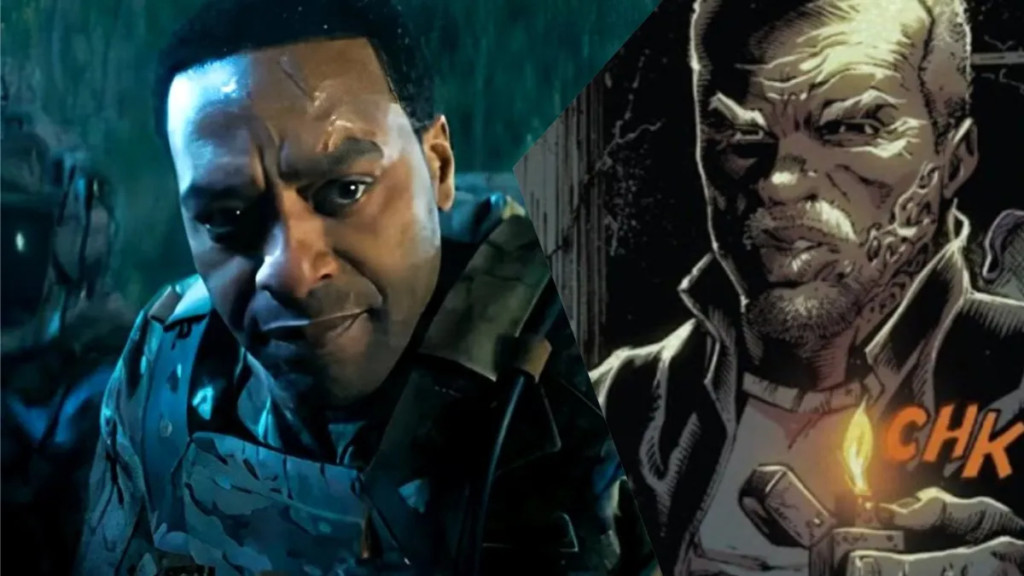 Rex Strickland, an Imperium soldier in Venom: The Last Dance
Rex Strickland, an Imperium soldier in Venom: The Last Dance
Chiwetel Ejiofor’s character, Rex Strickland, deviates significantly from his comic book counterpart. In the comics, Rex is a symbiote super-soldier. However, in “The Last Dance,” he is depicted as a regular soldier within the Imperium. Rex Strickland, also known as Tyrannosaurus in some circles, first appeared in Venom Vol. 4, #1-2. Notably, in the comics, Rex’s symbiote took over after his death in Vietnam, a backstory completely absent in the film.
Phage: Pudgy and Perished
 Phage symbiote in Venom: The Last Dance
Phage symbiote in Venom: The Last Dance
Phage, not to be confused with the Xenophages, is portrayed as a somewhat pudgy, orange-yellow symbiote in the film. Bonding to an Imperium security guard named Jim, Phage meets his end in the final battle. Phage shares his comic book origin with Agony and Lasher, debuting in Venom: Lethal Protector #4.
Hybrid Homage? A Double-Headed Symbiote
The film seems to offer a loose interpretation of the Hybrid symbiote from the comics. During the final battle, two symbiotes merge into a double-headed creature. While visually different from the comic book Hybrid, the merging of symbiotes points to this character concept. Hybrid originally appeared in Venom: Along Came a Spider #1.
Red Goblin Nod? The Fiery Symbiote
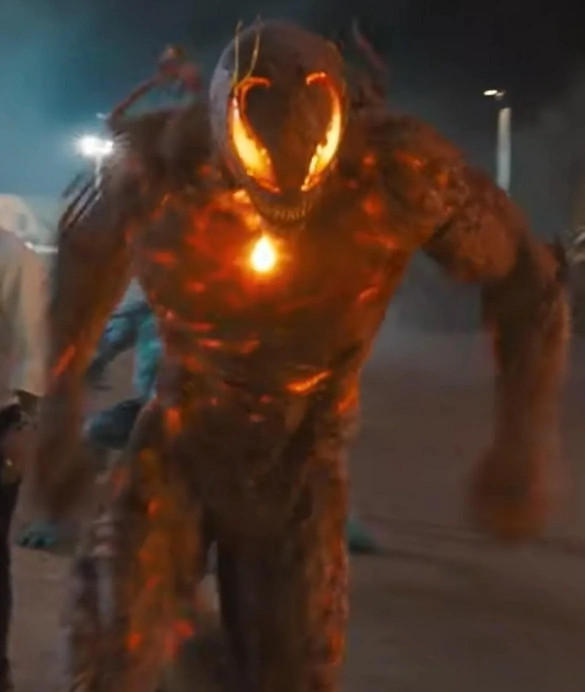 Fire-powered symbiote possibly referencing Red Goblin in Venom 3
Fire-powered symbiote possibly referencing Red Goblin in Venom 3
A symbiote with fiery powers makes an appearance, sparking Red Goblin speculation. While no symbiote in the comics inherently wields fire, Norman Osborn, as Red Goblin, achieved fire-based abilities by bonding with Carnage and leveraging his Goblin Serum enhancements in The Amazing Spider-Man #798. The fiery symbiote in “The Last Dance” could be a visual homage to this menacing Spider-Man villain.
Anti-Venom Echo? The Silvery White Symbiote
 White symbiote possibly referencing Anti-Venom in Venom: The Last Dance
White symbiote possibly referencing Anti-Venom in Venom: The Last Dance
“Venom: The Last Dance” takes creative liberties with symbiote colors, featuring a striking silvery white symbiote. While Stealth Venom figures exist, the most prominent white symbiote in the comics is Anti-Venom, famously associated with Flash Thompson. Although Flash is absent from the film, this white symbiote visually nods to the Anti-Venom suit, which debuted in The Amazing Spider-Man #569.
And for those wondering, despite Rhys Ifans’ presence, there’s no Lizard appearance in this Venom installment.
Final Thoughts
“Venom: The Last Dance” is clearly a love letter to Venom’s comic book history, packed with Easter eggs and deep cuts for dedicated fans. While some references are more direct than others, and some character treatments deviate from the source material, the film offers plenty for comic aficionados to dissect and enjoy. Did you spot any other references? What were your favorite Easter eggs? Let us know in the comments below!
